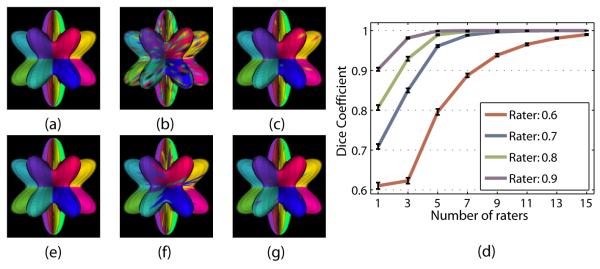Statistical Fusion of Surface Labels provided by Multiple Raters
Bogovic, B. A. Landman, P.-L. Bazin, and J. L. Prince. “Statistical Fusion of Surface Labels provided by Multiple Raters, Over-complete, and Ancillary Data”, In Proceedings of the SPIE Medical Imaging Conference. San Diego, CA, February 2010 PMC2997739
Abstract
Studies of the size and morphology of anatomical structures rely on accurate and reproducible delineation of the structures, obtained either by human raters or automatic segmentation algorithms. Measures of reproducibility and variability are vital aspects of such studies and are usually acquired using repeated scans and repeated delineations (in the case of human raters). Methods exist for simultaneously estimating the true structure and rater performance parameters from multiple segmentations and have been demonstrated on volumetric images. In this work, we extend the application of previous methods onto two-dimensional surfaces parameterized as triangle meshes. Label homogeneity is enforced using a Markov random field formulated with an energy that addresses the challenges introduced by the surface parameterization. The method was explored using both simulated raters and surface labels obtained from an atlas registration. Simulated raters are computed using a global error as well as a novel and more realistic boundary error model. We study the impact of raters and their accuracy based on both models, and show how effectively this method estimates the true segmentation on simulated and real surfaces.

Results for simulated surfaces: (a) The ground truth phantom parcellation, (b) simulated confusion matrix rater (true positive fraction = 0.7), (c) STAPLES result using 7 such raters without spatial correlation, (d) the results of 50 Monte Carlo iterations varying the expected rater performance and the number of raters, and (e) the STAPLES result using a MRF. Also shown are (f) a sample simulated boundary error rater (true positive fraction = 0.7), and (g) the STAPLES result using 7 such raters without spatial correlation.